Dalmatian Bellflower Plant
- March 12, 2024
- 0 comment
The Dalmatian Bellflower, also called Campanula Portenschlagiana, is a lovely plant that is not only beautiful but also plays a vital role in nature. This plant is known for its delicate bell-shaped flowers that come in shades of purple and blue, adding a pop of color to gardens and landscapes.
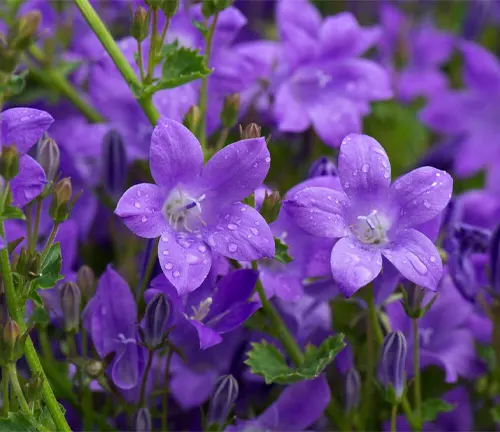
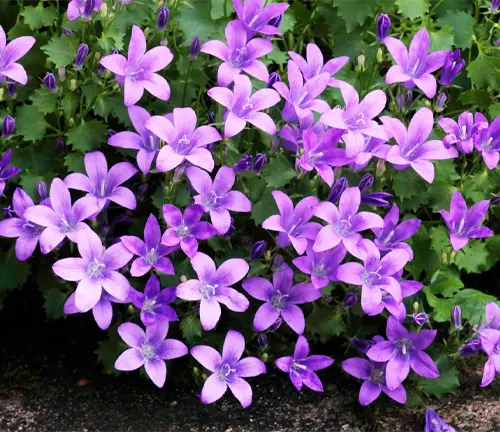
The Dalmatian Bellflower is important for the environment as it attracts pollinators like bees and butterflies, helping in the pollination process and supporting biodiversity. The Dalmatian Bellflower is easy to grow and maintain, making it a popular choice for gardeners.
| Characteristics | Description |
| Scientific Name | Campanula Portenschlagiana |
| Common Names | Dalmatian Bellflower, Wall Bellflower, Adriatic Bellflower |
| Family | Campanulaceae |
| Native Region | The Dalmatian Coast of Croatia |
| Plant Type | Herbaceous Perennial |
| Size | Typically grows to a height of 8-10 inches with a spread of 12-18 inches |
| Leaves | Small, glossy, heart-shaped, and deep green in color |
| Flowers | Star-shaped, violet-blue, or lavender-hued flowers that bloom profusely in spring and early summer |
| Propagation | Primarily propagated through division or stem cuttings |
| Drought Tolerance | Moderate to high drought tolerance |
| Cultural Uses | Often used as ground cover in gardens and landscapes |
| Ecological Role | Attracts pollinators such as bees and butterflies |
| Notable Species | Campanula muralis, Campanula lactiflora, Campanula persicifolia |
| Hardiness Zones | Typically grows in USDA hardiness zones 3-8 |
| Growth Rate | Moderate |
| Lifespan | Perennial, with a long lifespan under favorable conditions |
Botanical Beauty of “Dalmatian Bellflower Plant”
Woodland Elegance
The Dalmatian Bellflower is renowned for its delicate and enchanting botanical beauty. Its profusion of violet-blue or lavender-hued star-shaped flowers creates a stunning visual display, making it a sought-after addition to gardens and landscapes. The small, glossy, heart-shaped leaves add to its overall appeal, making it a favorite among gardeners and horticulturists.
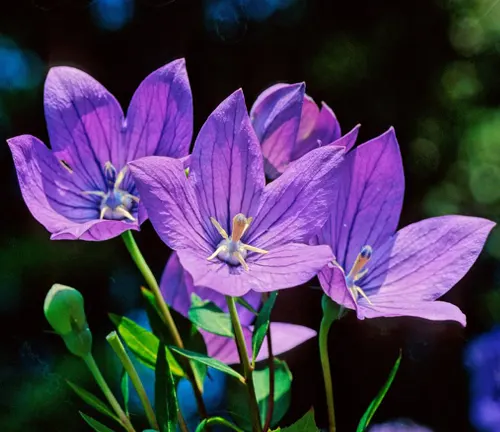
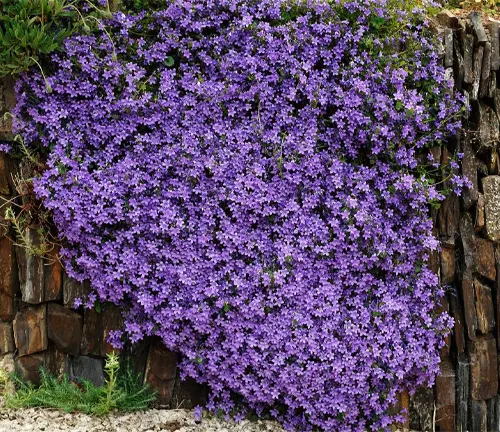
The Dalmatian Bellflower brings a touch of woodland elegance with its charming flowers and lush leaves, enhancing the beauty of forests and gardens alike. This plant’s adaptability to different woodland environments makes it a popular choice for adding beauty and ecological value to natural settings.
Ecological Importance
The Dalmatian Bellflower is crucial for nature because it attracts bees and butterflies with its sweet nectar-filled flowers. By providing these pollinators with food, this plant helps support the diversity and well-being of the ecosystems it inhabits. This makes the Dalmatian Bellflower an essential part of maintaining a healthy environment.
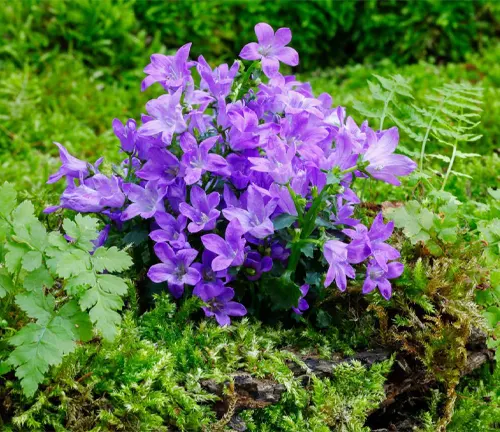
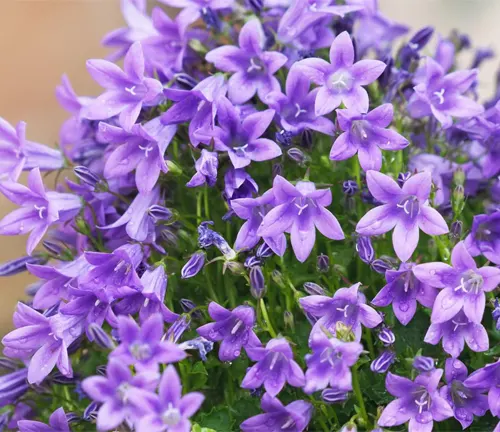
Cultivation and Conservation
Growing the Dalmatian Bellflower is simple, which is why many people love to plant it in gardens and landscapes. This plant can handle some dry conditions and different types of soil, so it doesn’t need a lot of attention to thrive. Its beauty and ecological benefits also make it a plant worth protecting and preserving for future generations to enjoy.
Fragrance
The Dalmatian Bellflower may not have a strong fragrance like some other flowers, but its stunning appearance and ecological benefits more than makeup for it. This plant’s beautiful bell-shaped flowers in shades of purple and blue add a lovely touch to any garden or natural setting. Despite lacking a strong scent, the Dalmatian Bellflower attracts important pollinators like bees and butterflies, aiding in the pollination process and supporting biodiversity.
Even though it may not fill the air with perfume, the Dalmatian Bellflower’s visual charm and role in nature make it a valuable plant for both aesthetic and environmental reasons. Its delicate blooms and lush foliage create a picturesque scene in gardens, while its ability to attract pollinators helps maintain the balance of ecosystems. So, while you may not catch a whiff of fragrance from this plant, its beauty and ecological contributions make it a worthwhile addition to any landscape.
Soil Stabilization
The Dalmatian Bellflower, with its spreading growth pattern and adaptability to different soil types, helps stabilize the soil in gardens and landscapes. Its roots spread out and create a network that holds the soil in place, preventing erosion and promoting stability. This is especially beneficial in areas where soil erosion is a concern, as the Dalmatian Bellflower’s root system helps keep the soil intact.
By planting Dalmatian Bellflowers in gardens and landscapes, you not only add beauty but also contribute to the health of the soil. The plant’s ability to stabilize the soil helps maintain the structure and fertility of the land, creating a more sustainable environment for other plants to thrive. So, next time you see these charming bell-shaped flowers blooming, remember that they are not just pretty faces; they are also working behind the scenes to keep the soil stable and healthy.
Common Uses

The Dalmatian Bellflower, scientifically known as Campanula Portenschlagiana, is a versatile plant with various common uses in landscaping. This bellflower is perfect for rock gardens, where it adds a splash of color and texture, cascading over walls or raised beds to create an enchanting effect. Additionally, it serves as excellent ground cover, spreading elegantly to form a lush carpet of greenery dotted with charming purple flowers.
Its ability to thrive in different settings and its low maintenance needs make it a popular choice for gardeners looking to enhance the beauty of their outdoor spaces. Furthermore, the Dalmatian Bellflower is ideal for filling spaces between stepping stones and accenting rock gardens due to its trailing growth habit. Its charming bell-shaped flowers bloom from spring to early summer, with the possibility of a second bloom in the fall.
This plant’s fast growth rate, easy care requirements, and showy flowers make it a valuable addition to borders, containers, and ground cover in various landscape designs. Whether you want to create a city courtyard oasis, an informal cottage garden, or a gravel and rock garden, the Dalmatian Bellflower’s versatility and aesthetic appeal make it a must-have plant for landscaping projects.
Benefits
The Dalmatian Bellflower, scientifically known as Campanula Portenschlagiana, offers various benefits in landscaping and garden settings. Here are some key benefits of this plant:
- Versatile Landscaping Plant: The Dalmatian Bellflower is a versatile plant commonly used in rock gardens, borders, and as ground cover. Its ability to trail over stone walls, fill spaces between stepping stones, and accentuate rock gardens makes it a valuable addition to various landscaping designs.
- Low Maintenance and Fast Growth: This plant is easy to care for and has a fast growth rate, quickly forming dense mats that spread by rhizomes. It requires average, well-drained soil and can thrive in full sun to partial shade, making it adaptable to different environmental conditions.
- Attractive Flowers and Foliage: The Dalmatian Bellflower produces charming bell-shaped purple flowers that bloom from spring to early summer, with the possibility of a second bloom in the fall. Its lush green foliage complements the flowers, creating a visually appealing display in gardens and landscapes.
- Ecological Benefits: While not strongly fragrant, the Dalmatian Bellflower attracts pollinators like bees and butterflies with its nectar-rich flowers, contributing to biodiversity and ecosystem health. Its ability to stabilize soil in garden and landscape settings further enhances its ecological importance.
Different Species
Campanula portenschlagiana (Dalmatian Bellflower)
is a vigorous, low-growing perennial that forms evergreen mounds of deep lavender bell-shaped flowers, blooming abundantly from early to late summer. This species is perfect for rock gardens, cascading over walls, or as ground cover due to its adaptability to various soil types and its ability to attract pollinators like bees and butterflies.
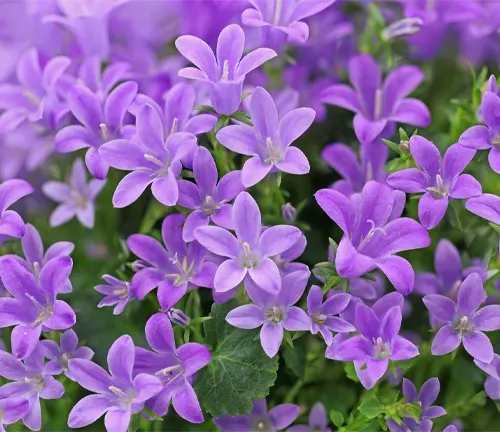
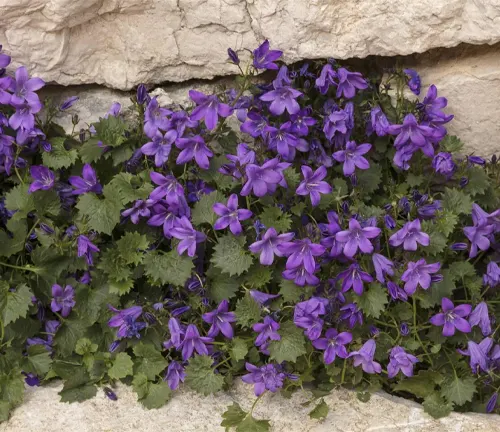
Campanula Muralis (Wall Bellflower)
also known as the Adria Bellflower, is a dense, rhizomatous perennial native to Croatia, producing deep purple flowers in summer and adding color to garden borders and rock gardens.
Campanula Garganica (Adriatic Bellflower)
is a compact perennial with delicate blue-violet bell-shaped flowers that bloom profusely in spring and early summer, ideal for rock gardens, borders, and containers.
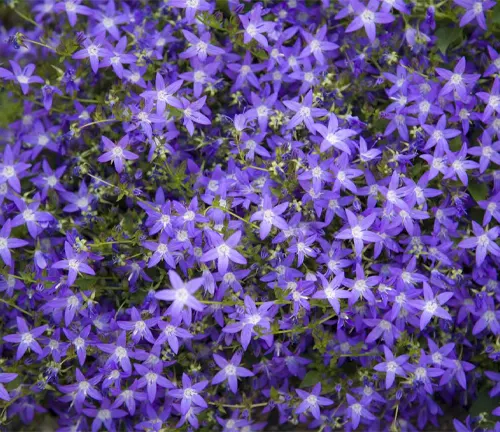
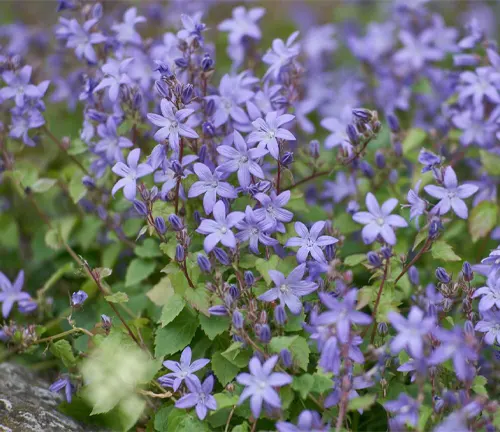
Campanula Poscharskyana (Serbian Bellflower)
is a spreading perennial with star-shaped lavender-blue flowers blooming from late spring to early summer, excellent for ground cover and filling gaps in garden beds.
Frequently Asked Questions (FAQs)
1. What is the Dalmatian Bellflower?
The Dalmatian Bellflower, or Campanula Portenschlagiana, is a perennial plant known for its beautiful, bell-shaped flowers in shades of purple and blue. It’s a popular choice in gardens for its vibrant color and the role it plays in attracting pollinators.
2. Where is the Dalmatian Bellflower native to?
This plant is native to the Dalmatian Coast of Croatia, thriving in the region’s unique climate and landscape.
3. How do you propagate the Dalmatian Bellflower?
Propagation is typically done through division or stem cuttings, making it relatively easy to spread and cultivate in your garden.
4. What are the watering needs of the Dalmatian Bellflower?
It has moderate to high drought tolerance, requiring less water once established, making it a low-maintenance option for gardens.
5. How does the Dalmatian Bellflower benefit the environment?
By attracting pollinators such as bees and butterflies, the Dalmatian Bellflower supports biodiversity and aids in the pollination process of surrounding plants.
6. Can the Dalmatian Bellflower be used for ground cover?
Yes, its spreading growth habit makes it an excellent choice for ground cover, adding beauty while stabilizing the soil in garden and landscape settings.
7. What are some common uses of the Dalmatian Bellflower in landscaping?
It is ideal for rock gardens, cascading over walls, filling gaps between stepping stones, and as a vibrant addition to borders and containers.
8. Does the Dalmatian Bellflower have a strong fragrance?
While not known for a strong fragrance, its stunning visual appeal and role in attracting pollinators make it a valuable addition to any garden.
9. What are the ideal conditions for growing a Dalmatian Bellflower?
It thrives in well-drained soil, under full sun to partial shade conditions, and is suitable for USDA hardiness zones 3-8.
10. Are there different species of the Dalmatian Bellflower?
Yes, while Campanula Portenschlagiana is the species commonly referred to as the Dalmatian Bellflower, the Campanula genus includes other species like Campanula muralis and Campanula garganica, each with its unique characteristics and appeal.


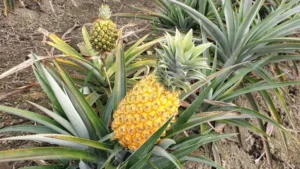



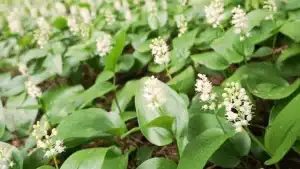
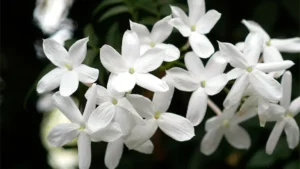
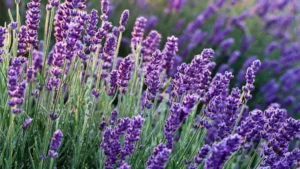

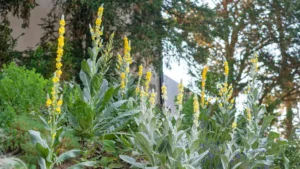
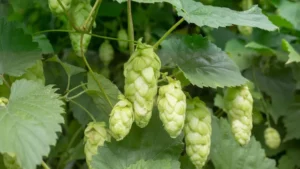

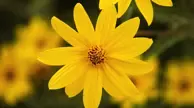
Leave your comment